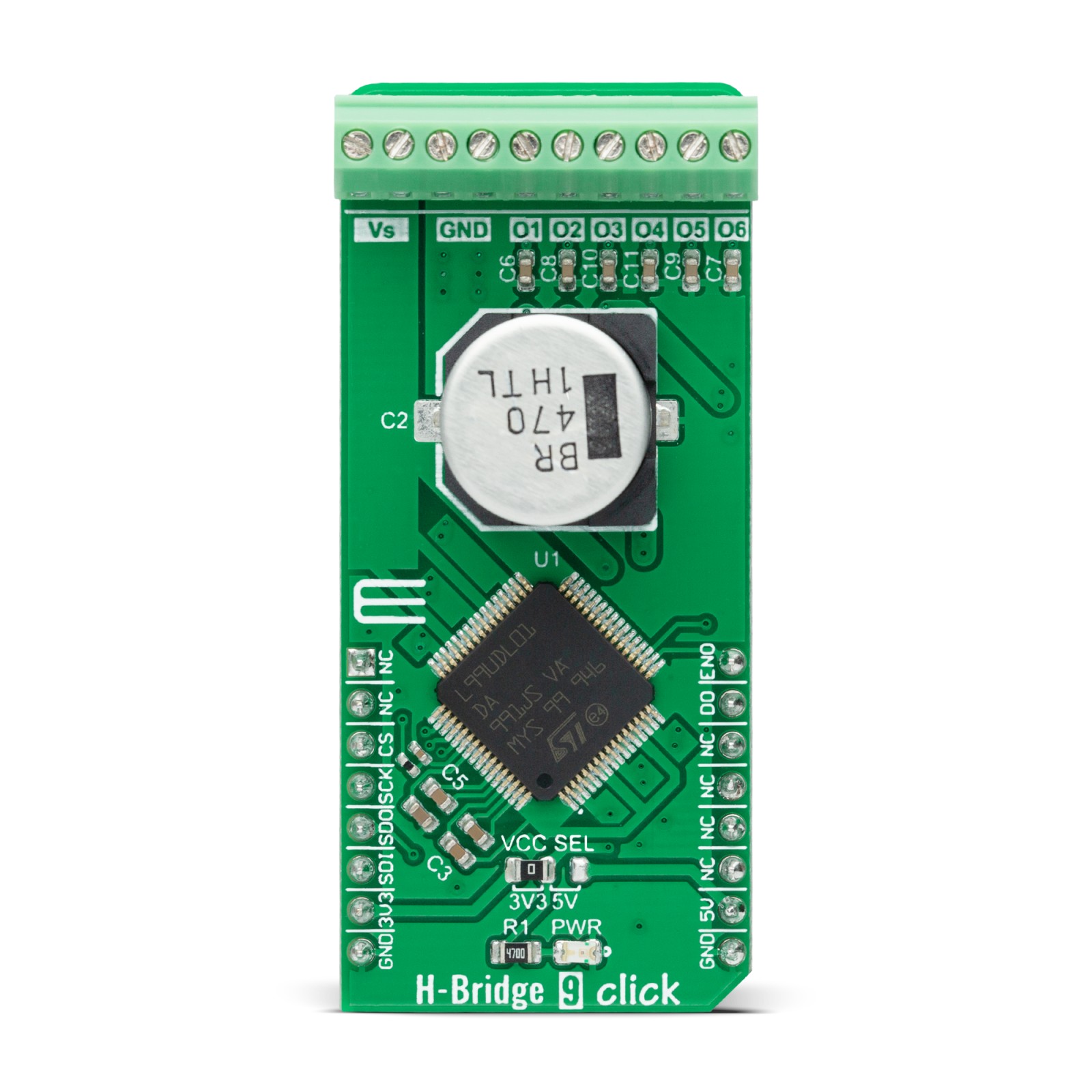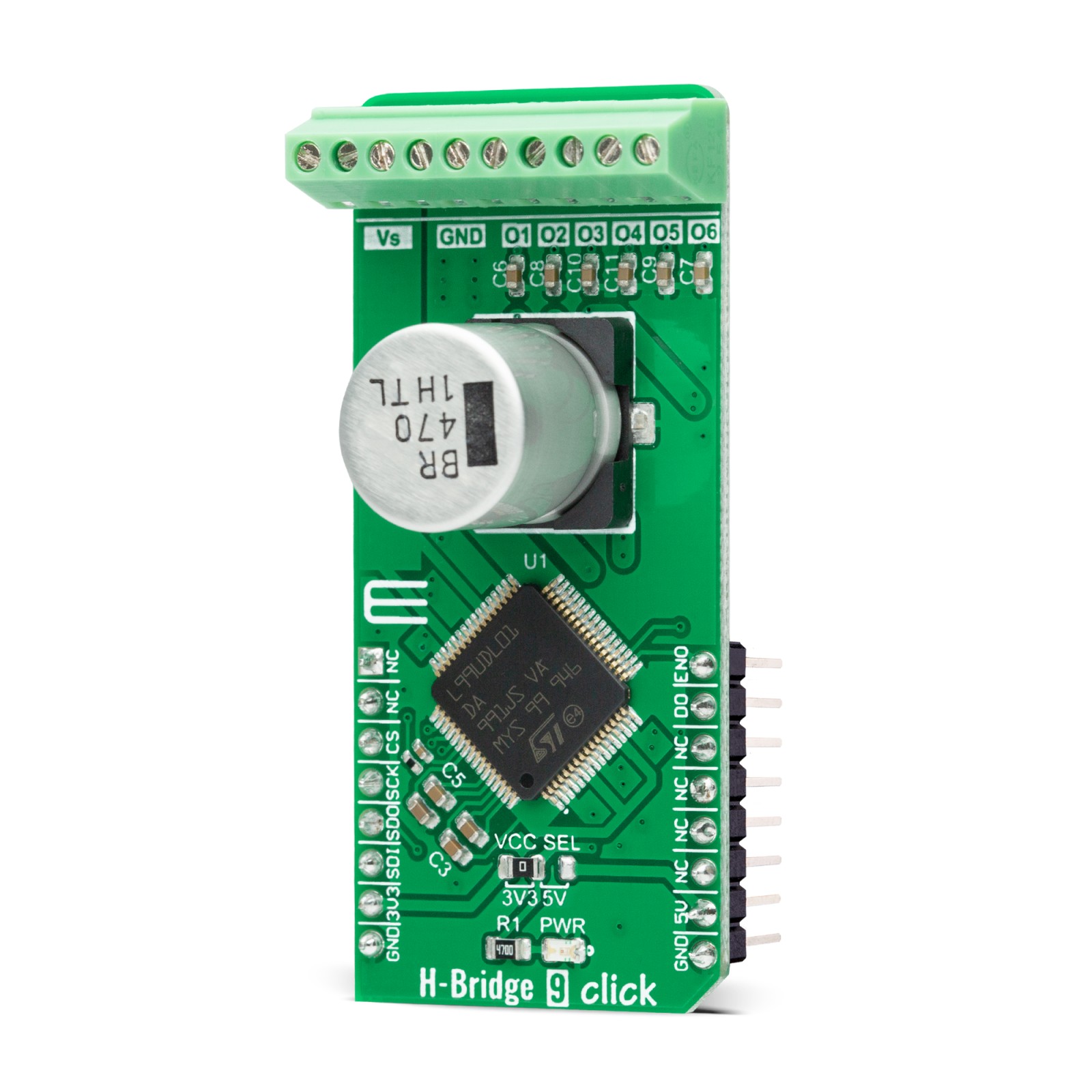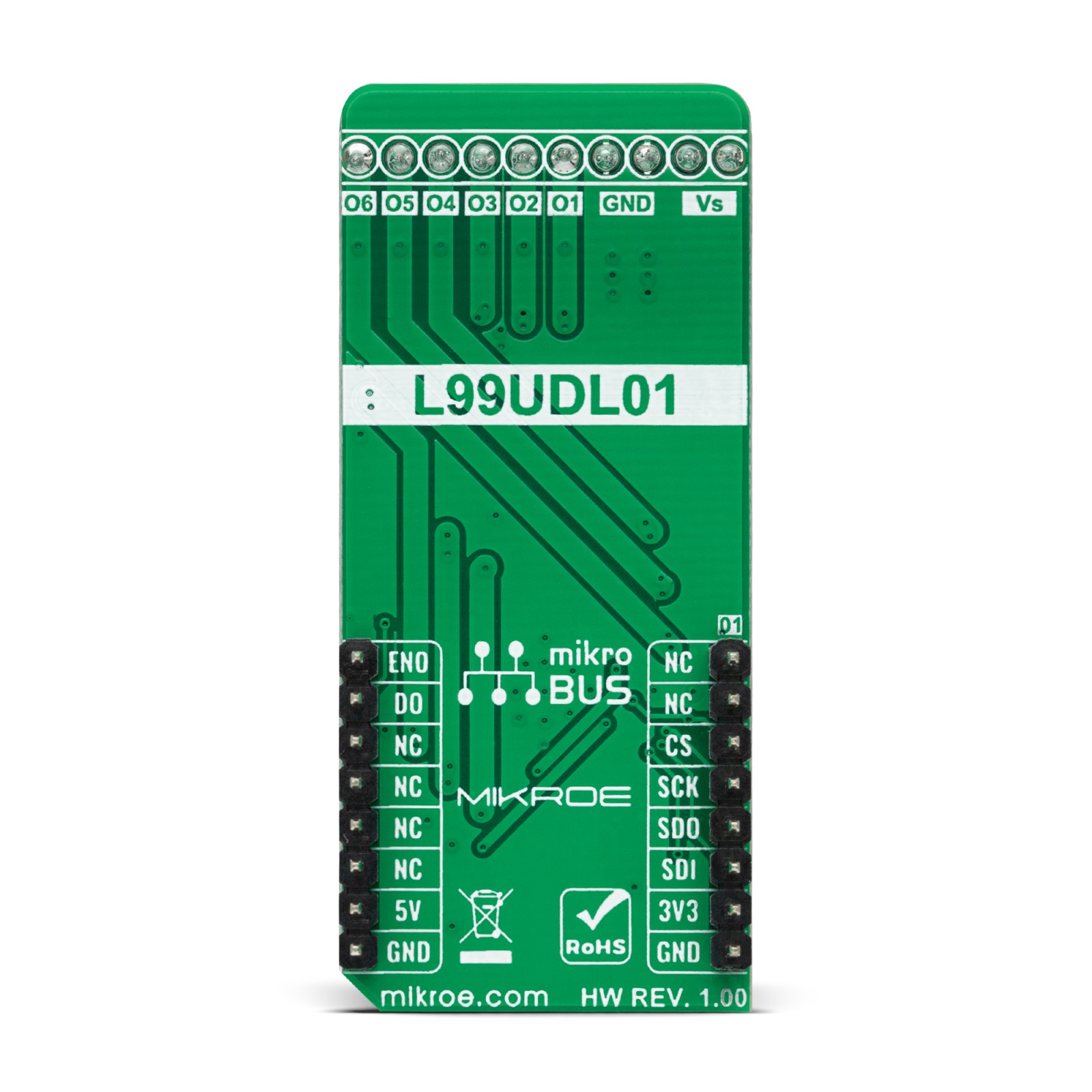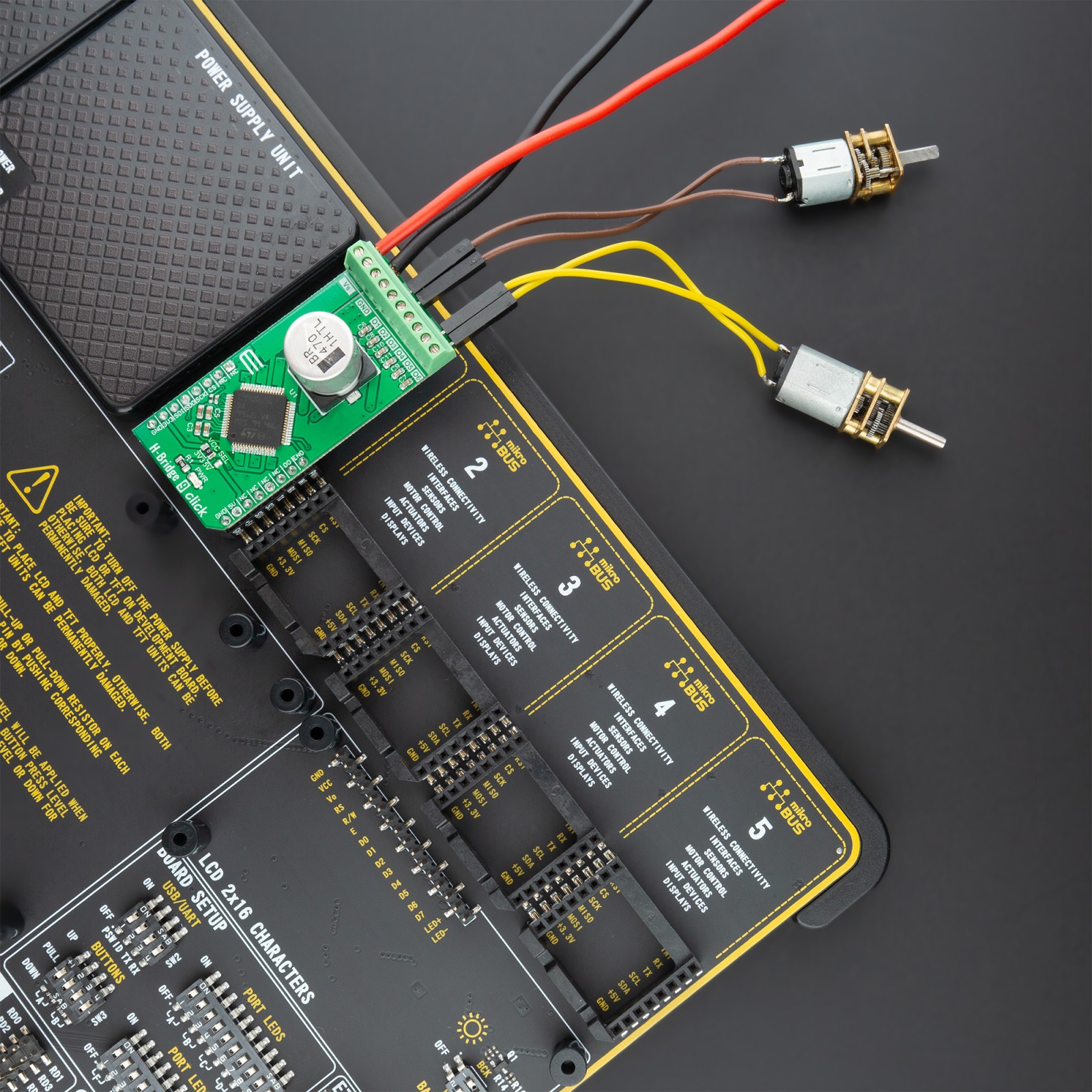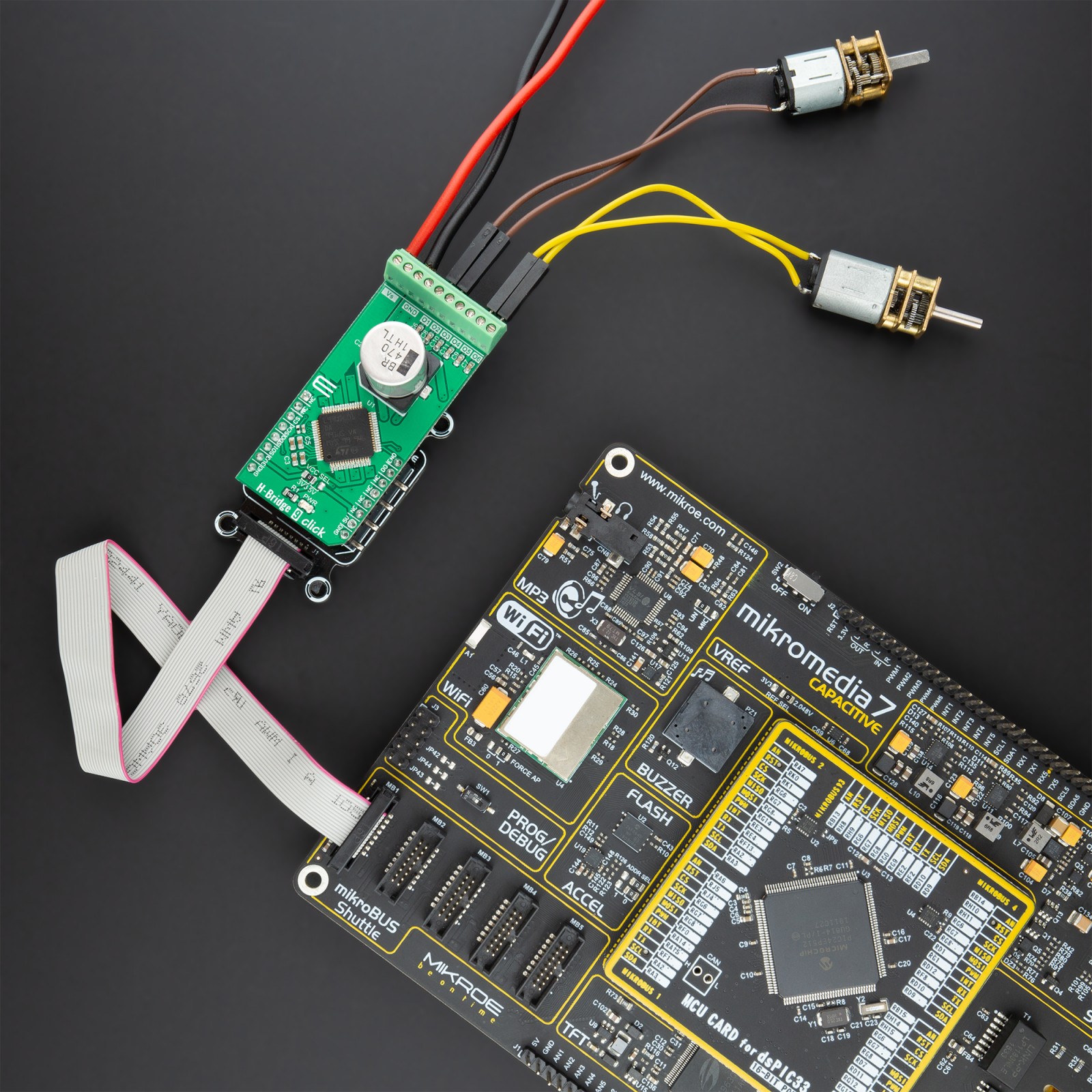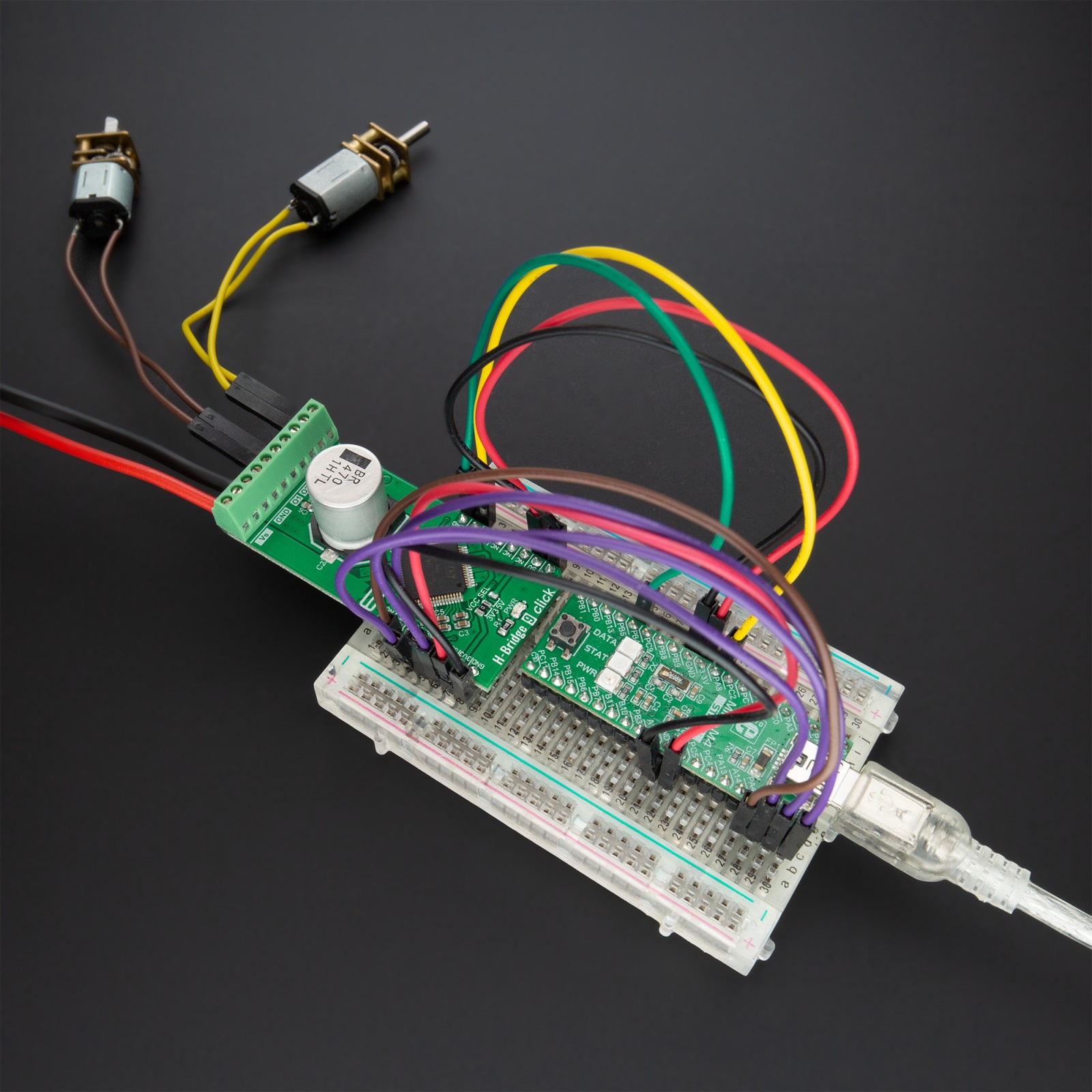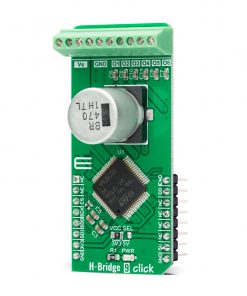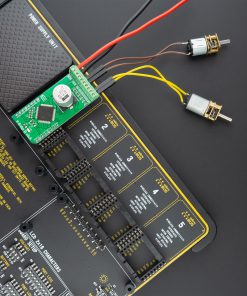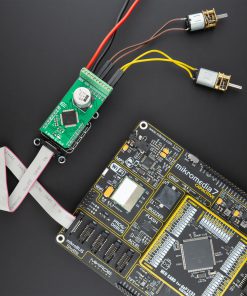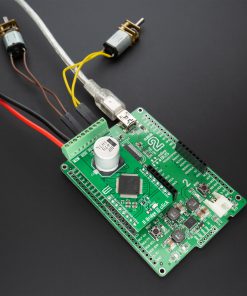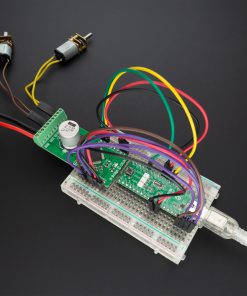H-Bridge 9 Click
R485.00 ex. VAT
H-Bridge 9 Click is a compact add-on board that contains six MOSFET half-bridge outputs. This board features the L99UDL01, a six-channel half-bridge driver monolithic integrated circuit that is PWM configurable and current regulated from STMicroelectronics. It achieves excellent load and line regulation over a wide input supply range up to 18V. These six integrated MOSFET H-bridges are commanded entirely by the SPI interface using duration and current level commands. Complete protection features include open load, short to battery and ground, and load integrity via 10-bit current feedback. This Click board™ is suitable as a multiple brushed DC motor driver for various applications.
H-Bridge 9 Click is supported by a mikroSDK compliant library, which includes functions that simplify software development. This Click board™ comes as a fully tested product, ready to be used on a system equipped with the mikroBUS™ socket.
Stock: Lead-time applicable.
| 5+ | R460.75 |
| 10+ | R436.50 |
| 15+ | R412.25 |
| 20+ | R396.73 |

